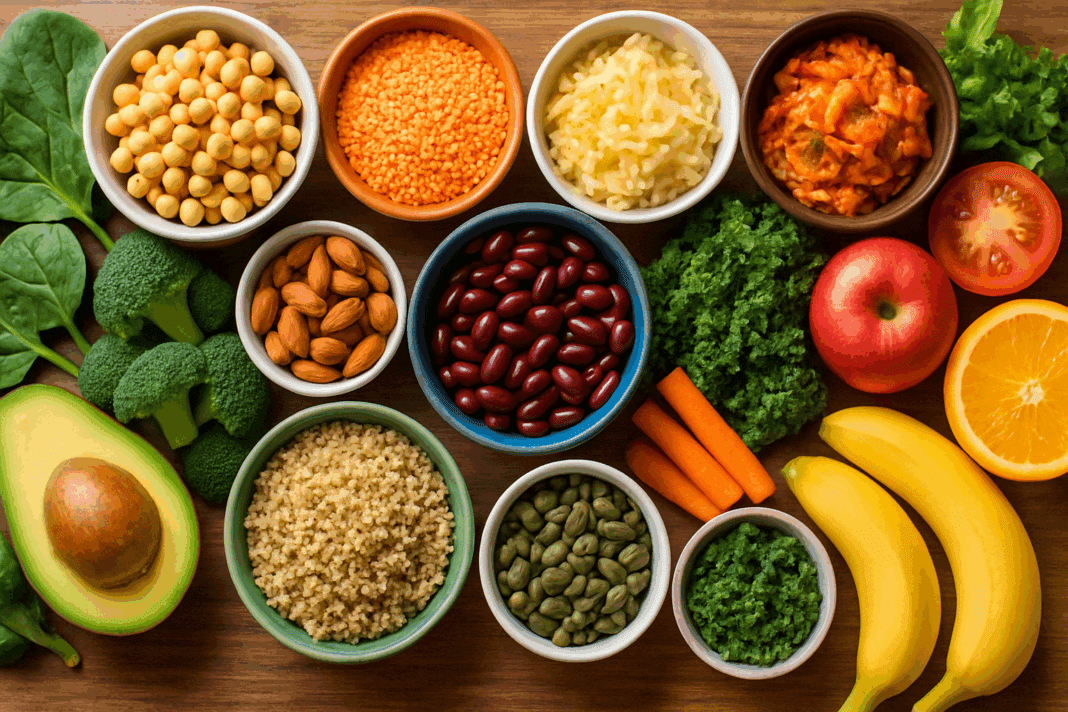In a world increasingly aware of the environmental, ethical, and health implications of dietary choices, plant-based eating has emerged not only as a trend but as a meaningful lifestyle. While many people have a general understanding of veganism as a diet free from animal products, a more nuanced exploration reveals the extraordinary diversity, richness, and nutritional sophistication that defines this way of eating. This article offers a comprehensive and practical guide to the things vegans can eat, highlighting nutrient-rich vegan food examples that support a balanced, whole-food plant-based diet.
You may also like: Healthy Plant-Based Dinners Made Easy: Best Whole Food Plant-Based Recipes for Beginners and Beyond
Adopting a vegan diet does not mean sacrificing variety or nutrition. On the contrary, the range of options available to vegans spans across all food categories, from protein-rich legumes and grains to vitamin-packed fruits and vegetables. This guide goes beyond surface-level lists to provide in-depth insight into plant-based nutrition, ensuring readers not only understand what to eat but why each food group matters. Grounded in scientific evidence and practical application, this exploration underscores how a plant-based approach can be both accessible and deeply nourishing.
Understanding the Foundation of Vegan Nutrition
A well-balanced vegan diet is built on an intricate foundation of whole foods that supply essential macronutrients and micronutrients. Understanding this structure is crucial to making informed dietary choices. For those new to the lifestyle, the things vegans can eat list might initially seem limited; however, this perception often stems from unfamiliarity rather than true dietary restrictions.
Macronutrients—carbohydrates, proteins, and fats—can all be sourced from plants. Whole grains like quinoa, brown rice, and oats serve as primary sources of complex carbohydrates and are also rich in dietary fiber, supporting digestive health and blood sugar regulation. Legumes such as lentils, black beans, and chickpeas are not only excellent protein sources but also provide iron, folate, and potassium. Healthy fats can be found in avocados, nuts, seeds, and oils like flaxseed and olive oil, all of which contribute to cardiovascular health and cognitive function.
Micronutrients, while needed in smaller quantities, are equally important. A vegan diet must be planned with attention to nutrients like vitamin B12, vitamin D, iodine, calcium, zinc, and omega-3 fatty acids. Fortified foods and supplementation can help ensure adequate intake, especially in regions or seasons with limited sun exposure or iodine-rich soil. Incorporating diverse, nutrient-dense foods ensures that the vegan food examples consumed daily are not only delicious but also biologically meaningful.
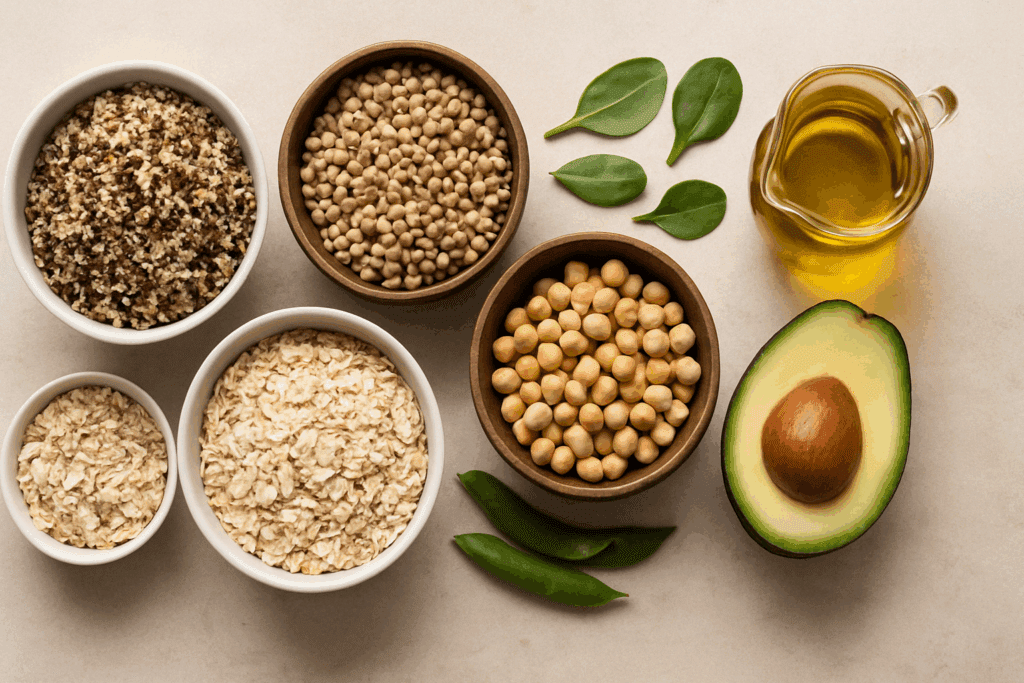
Legumes and Pulses: The Protein Powerhouses of the Plant-Based Diet
Legumes are a cornerstone of vegan eating and offer one of the most powerful combinations of nutrition, affordability, and versatility. The category includes lentils, beans, peas, and soy-based foods like tofu, tempeh, and edamame. These items are frequently found at the top of any well-curated things vegans can eat list.
Beyond being rich in protein, legumes are packed with iron, fiber, magnesium, and polyphenols—compounds known for their antioxidant properties. The iron in legumes is non-heme, which is absorbed less efficiently than the heme iron found in animal products. However, consuming legumes alongside vitamin C-rich foods such as bell peppers, citrus fruits, or tomatoes can significantly enhance absorption. This biochemical pairing highlights one of many strategic approaches to optimizing plant-based nutrition.
Soy-based foods deserve special mention, as they are complete proteins, meaning they contain all nine essential amino acids. Tofu and tempeh are incredibly adaptable in culinary applications, making them staples in both traditional Asian cuisine and modern vegan recipes. When considering practical vegan food examples, a stir-fry featuring tofu, broccoli, and sesame oil not only delivers protein and fiber but also includes calcium, iron, and healthy fats in a single, satisfying dish.
Whole Grains: Complex Carbohydrates for Sustained Energy
Whole grains are integral to a plant-based diet and play a crucial role in maintaining energy levels, supporting digestion, and providing essential nutrients. Unlike refined grains, which are stripped of their bran and germ, whole grains retain all three parts of the grain kernel, offering a richer profile of fiber, B vitamins, and minerals such as selenium and magnesium.
Common examples of whole grains include oats, quinoa, brown rice, barley, farro, millet, and bulgur. Each of these grains brings unique nutritional benefits. Quinoa, for instance, is a complete protein, making it particularly valuable in vegan diets. Oats are renowned for their beta-glucan content, a type of soluble fiber that has been shown to lower cholesterol and improve heart health.
These whole grains can form the base of meals or act as hearty sides. A quinoa salad with chickpeas, roasted vegetables, and a tahini dressing offers a meal that is both nutrient-dense and gastronomically satisfying. Including a range of whole grains in one’s dietary rotation ensures not only variety in texture and flavor but also comprehensive nutrient coverage. This is why grains remain a cornerstone in any accurate things vegans can eat list.
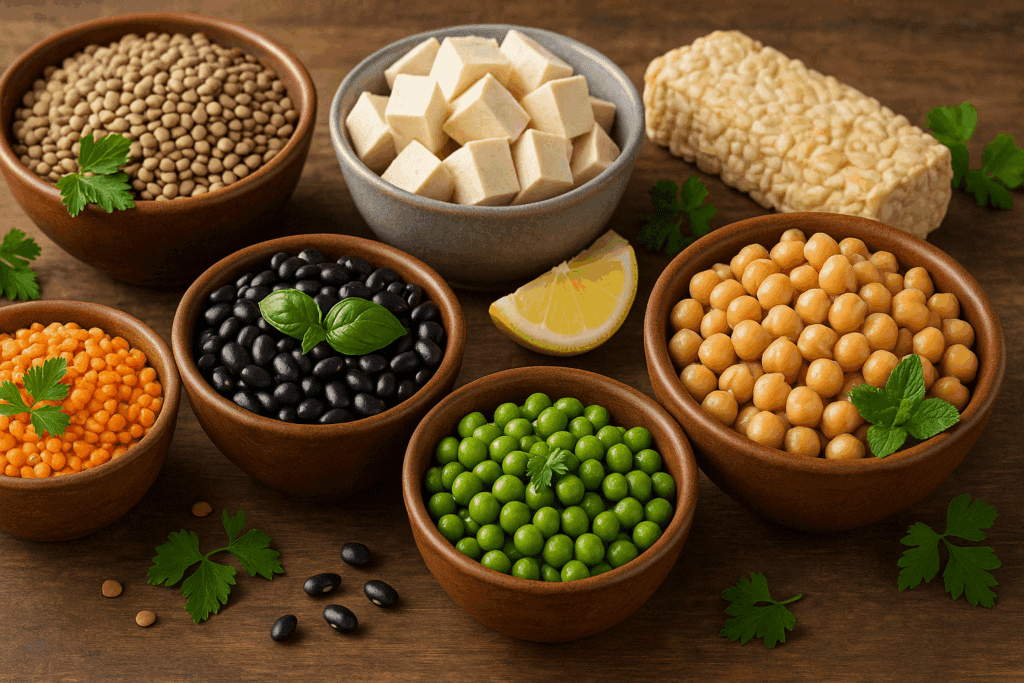
Fruits and Vegetables: The Cornerstones of Antioxidant-Rich Eating
Fruits and vegetables are fundamental to human health, and their importance is magnified in a vegan diet. They are primary sources of vitamins, minerals, and antioxidants that protect the body from oxidative stress and chronic disease. Moreover, their high fiber content supports gut microbiota, which in turn affects immune function and even mental health.
Leafy greens such as spinach, kale, collard greens, and Swiss chard provide calcium, iron, and vitamin K. Brightly colored vegetables like bell peppers, carrots, and tomatoes are rich in vitamins A and C, while cruciferous vegetables such as broccoli, Brussels sprouts, and cabbage contain compounds linked to cancer prevention. Berries, citrus fruits, bananas, apples, and melons are just a few examples of fruit that offer both nutrition and palate-pleasing variety.
Importantly, the variety of produce one consumes directly impacts nutrient diversity. Eating the rainbow is not just a catchy phrase—it is a scientifically supported strategy for optimizing nutrient intake. Including fruits and vegetables in every meal, whether as main components, side dishes, or snacks, adds richness to the vegan food examples worth showcasing. Smoothies, salads, stir-fries, and roasted vegetable bowls are just a few of the many vehicles for integrating these foods into daily life.
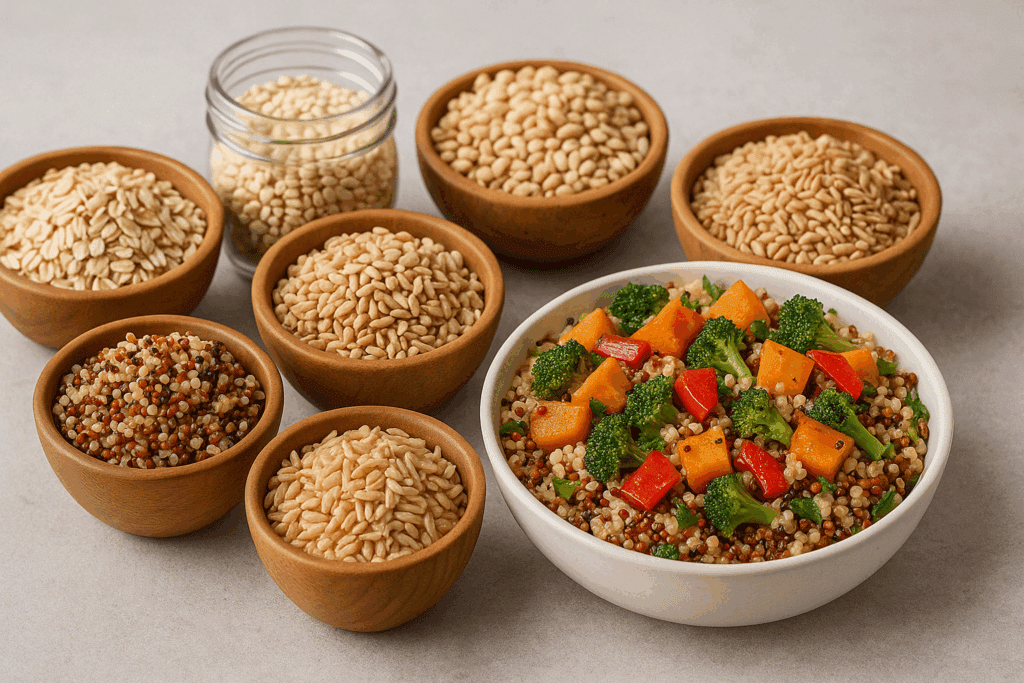
Nuts, Seeds, and Healthy Fats: Nutrient-Dense Enhancers
Nuts and seeds, while often consumed in small quantities, are nutritional powerhouses. They are calorie-dense but also rich in healthy fats, protein, fiber, and a host of vitamins and minerals. Almonds, walnuts, cashews, chia seeds, flaxseeds, sunflower seeds, and hemp seeds are among the most commonly used in vegan diets.
These foods contribute significantly to the intake of essential fatty acids, particularly omega-3s, which are crucial for brain and cardiovascular health. Flaxseeds and chia seeds are particularly valuable sources of alpha-linolenic acid (ALA), a plant-based omega-3. Walnuts are also a notable source and can be easily added to salads, oatmeal, or grain bowls. Moreover, nut butters provide a satisfying and nutritious spread for whole grain bread, fruit slices, or smoothies.
Aside from fats, nuts and seeds supply calcium, magnesium, selenium, and zinc. Tahini, a paste made from sesame seeds, is especially high in calcium and adds a savory, creamy flavor to dressings and sauces. These attributes make nuts and seeds indispensable items on any comprehensive things vegans can eat list, offering both flavor and functional nutrition.
Fermented Foods and Probiotics: Supporting Gut Health on a Vegan Diet
Gut health plays a critical role in overall well-being, influencing digestion, immunity, and even mood regulation. Fermented foods are natural sources of probiotics—beneficial bacteria that support a balanced gut microbiome. For vegans, plant-based fermented foods such as sauerkraut, kimchi, tempeh, miso, kombucha, and dairy-free yogurts made from almond, soy, or coconut milk offer diverse options for probiotic intake.
These foods not only provide beneficial bacteria but also increase the bioavailability of nutrients. For instance, the fermentation process in tempeh reduces phytic acid, an antinutrient that can inhibit mineral absorption. Including fermented foods in meals can improve digestion and enhance nutrient uptake, particularly when paired with fiber-rich fruits, vegetables, and grains.
Understanding the significance of gut health within plant-based eating elevates one’s appreciation for these unique vegan food examples. Rather than being viewed as specialty items, fermented foods should be considered staples, contributing not only to digestive harmony but also to culinary diversity.

Fortified Foods and Supplements: Addressing Nutrient Gaps with Intention
Even the most well-planned vegan diet can fall short in certain nutrients, particularly vitamin B12, vitamin D, iodine, and long-chain omega-3 fatty acids like DHA and EPA. These nutrients are either absent or present in minimal amounts in plant foods. For this reason, incorporating fortified foods and high-quality supplements is both a practical and evidence-based strategy for long-term health.
Fortified plant milks, breakfast cereals, and nutritional yeast are common vehicles for delivering vitamin B12, calcium, and vitamin D. These products are especially valuable for individuals with increased needs, such as older adults or those with limited sun exposure. Supplementation may also be appropriate for nutrients that are difficult to obtain from diet alone, such as DHA, which is typically sourced from algae in vegan supplements.
Recognizing when to use fortified foods or supplements is a mark of nutritional maturity rather than a sign of inadequacy. By integrating these into a balanced diet, vegans can ensure they are meeting all their physiological needs while continuing to enjoy the vast array of foods that a whole-food plant-based diet offers.
Practical Meal Planning and Everyday Application
Embracing a vegan lifestyle involves more than just knowing what foods are permissible—it requires thoughtful planning and an understanding of nutritional synergy. For example, creating meals that pair legumes with grains not only enhances flavor but also ensures complete protein profiles. Adding a vitamin C source to iron-rich foods boosts absorption, while including healthy fats improves the uptake of fat-soluble vitamins like A, D, E, and K.
A practical approach to vegan eating involves building meals around these principles. Breakfast might consist of oatmeal topped with flaxseeds, berries, and fortified almond milk. Lunch could include a grain bowl with quinoa, black beans, avocado, and a citrus vinaigrette. Dinner might feature lentil stew with leafy greens and a slice of whole grain bread spread with tahini. These meals are not only balanced but also easy to prepare and adapt to individual tastes and cultural preferences.
Creating a things vegans can eat list tailored to one’s own lifestyle can be a useful exercise in both inspiration and accountability. Keeping a rotating list of vegan food examples on hand facilitates grocery shopping, meal prep, and dining out, making plant-based living more manageable and enjoyable.
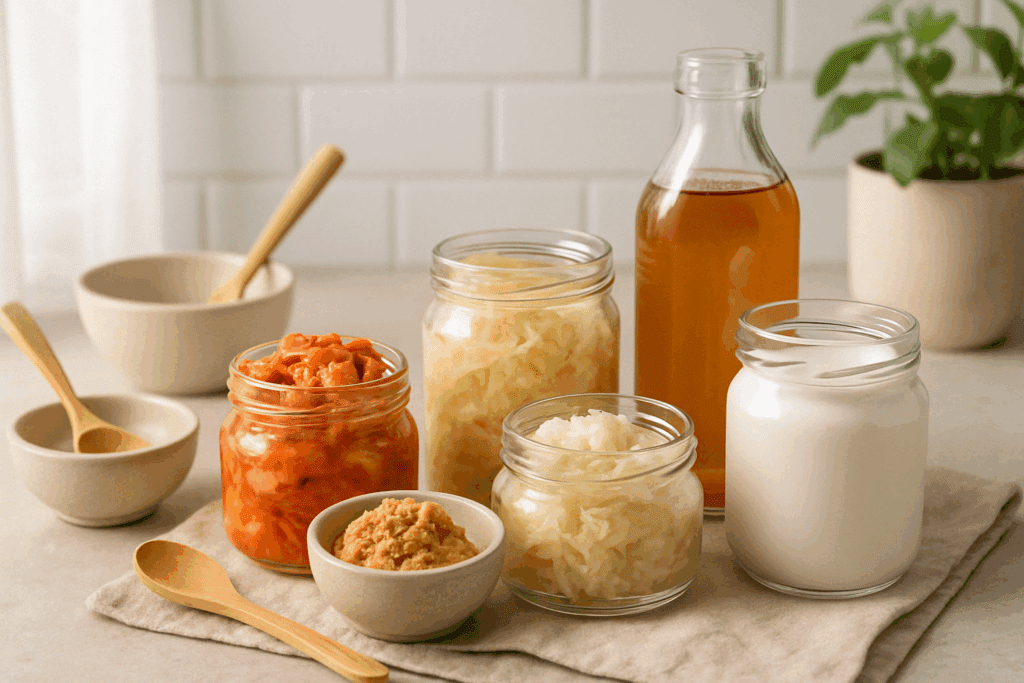
Frequently Asked Questions: Things Vegans Can Eat & Nutrient-Rich Vegan Food Examples
What are some overlooked items on the things vegans can eat list that offer exceptional nutrition?
While many associate vegan diets with staples like beans and broccoli, some lesser-known foods offer impressive nutritional profiles. Sea vegetables such as wakame, nori, and dulse are rich in iodine, a nutrient that can be challenging to obtain from plant-based sources alone. Sprouted legumes and grains enhance bioavailability of nutrients like zinc and iron while improving digestion. Blackstrap molasses is another underrated item—it’s packed with calcium, magnesium, and iron, making it an exceptional plant-based sweetener. Including these lesser-known vegan food examples not only adds variety to meals but also elevates micronutrient intake in ways that are often overlooked in mainstream nutrition guides.
Can athletes thrive on a vegan diet, and what foods best support physical performance?
Athletes can absolutely thrive on a vegan diet when it’s planned with intention. High-protein vegan food examples such as lentils, seitan, tofu, and quinoa offer the necessary amino acids to support muscle recovery. For endurance, complex carbohydrates from whole grains and starchy vegetables provide long-lasting energy. Foods rich in antioxidants—like tart cherries, blueberries, and spinach—can help reduce inflammation post-training. A high-performance things vegans can eat list will often include smoothies with plant-based protein powders, chia seeds, and fortified plant milks, ensuring macronutrient balance and recovery support.
How can vegans ensure they are getting enough vitamin B12 without relying entirely on supplements?
Vitamin B12 is not naturally found in plant foods, but certain fortified vegan food examples provide a reliable source. Nutritional yeast, for instance, is commonly fortified with B12 and can be sprinkled on popcorn, pasta, or mixed into sauces for a cheesy flavor. Fortified cereals and plant-based milks also frequently contain B12, though it’s essential to read labels to confirm. While supplements may still be recommended for consistency, these foods offer additional options to diversify one’s intake. Including fortified items on a things vegans can eat list ensures proactive nutritional planning that supports long-term health.
What are some strategies for making the transition to veganism more sustainable long-term?
The most successful long-term transitions begin with small, sustainable changes rather than abrupt overhauls. Instead of eliminating all animal products at once, try replacing them meal by meal with familiar vegan food examples like lentil chili instead of beef chili or oat milk in place of dairy milk. Building a personalized things vegans can eat list helps reduce decision fatigue and keeps meals exciting. Social support also plays a crucial role—sharing meals with friends, joining vegan forums, or following plant-based influencers can provide daily motivation. Over time, the shift becomes more about lifestyle enhancement than dietary restriction.
How do cultural food traditions intersect with plant-based eating?
Cultural cuisines often offer inherently plant-based dishes that can serve as valuable inspiration. Indian dal, Ethiopian injera with lentils, Middle Eastern falafel, and many East Asian tofu dishes are authentic vegan food examples deeply rooted in history. Exploring these traditional meals not only enhances the things vegans can eat list but also fosters a sense of global culinary appreciation. Moreover, adapting cultural dishes with vegan ingredients often leads to flavorful, nutrient-rich meals that maintain their heritage. Understanding the cultural context behind food deepens the meaning and enjoyment of veganism beyond the nutritional aspect.
Is it possible to maintain a vegan diet while traveling or dining out frequently?
Absolutely—it simply requires foresight and flexibility. Many restaurants now feature vegan food examples on their menus, and apps like HappyCow help travelers locate plant-based dining options worldwide. Packing shelf-stable items like trail mix, energy bars, or dehydrated soups ensures access to essentials when vegan meals aren’t readily available. Maintaining a mental things vegans can eat list with portable, no-cook foods like fruit, nut butters, or hummus can help bridge any gaps. With a little planning, travel can remain both enjoyable and aligned with vegan values.
What are some emerging trends in plant-based food innovation worth watching?
The landscape of vegan food is rapidly evolving, with innovations emerging in both nutrition and sustainability. Fermented plant proteins are becoming more popular for their enhanced digestibility and umami-rich flavor. Cellular agriculture—lab-grown dairy and eggs without animals—is also gaining traction, promising ethical alternatives with similar textures and tastes. Nutritionally, newer fortified foods go beyond B12 and calcium to include DHA, iron, and even prebiotics. As these innovations expand the things vegans can eat list, they also reflect broader societal shifts toward environmentally conscious living. Keeping an eye on these trends can help vegans stay informed and nutritionally supported.
How can a vegan diet impact long-term cognitive health?
Emerging research suggests that plant-based diets rich in polyphenols and omega-3s may support cognitive longevity. Including vegan food examples like walnuts, flaxseeds, blueberries, and dark leafy greens ensures a steady intake of brain-boosting nutrients. Choline, though more commonly associated with eggs, is also found in soy products and certain legumes—important for memory and brain function. A curated things vegans can eat list that focuses on neuroprotective foods can play a proactive role in preserving mental sharpness. While more longitudinal studies are needed, the existing evidence points toward strong potential cognitive benefits.
What are some psychologically empowering strategies to help people stick with a vegan lifestyle?
Behavioral consistency often hinges more on psychology than willpower alone. Creating a personalized things vegans can eat list rooted in positive associations—like childhood flavors or favorite comfort meals—builds emotional satisfaction into eating. Visualization techniques, such as imagining the benefits of one’s dietary choices on the environment or animal welfare, can strengthen resolve. Tracking progress through journals or food diaries adds accountability and a sense of achievement. Integrating mindfulness during meals also fosters appreciation and reduces impulsive, non-aligned choices. These psychological tools work synergistically to reinforce long-term commitment.
How do food justice and accessibility relate to plant-based nutrition?
Veganism intersects with broader social issues, including food justice, which emphasizes equitable access to healthy, affordable food. While some assume that building a robust things vegans can eat list requires premium groceries, many nutrient-dense vegan food examples—like beans, rice, and frozen vegetables—are cost-effective and widely available. Community gardens, food co-ops, and policy advocacy all play roles in making plant-based diets more accessible. Addressing systemic barriers ensures that veganism is not just a personal health choice, but also a movement toward collective well-being. Expanding accessibility broadens the impact of plant-based living far beyond individual health.
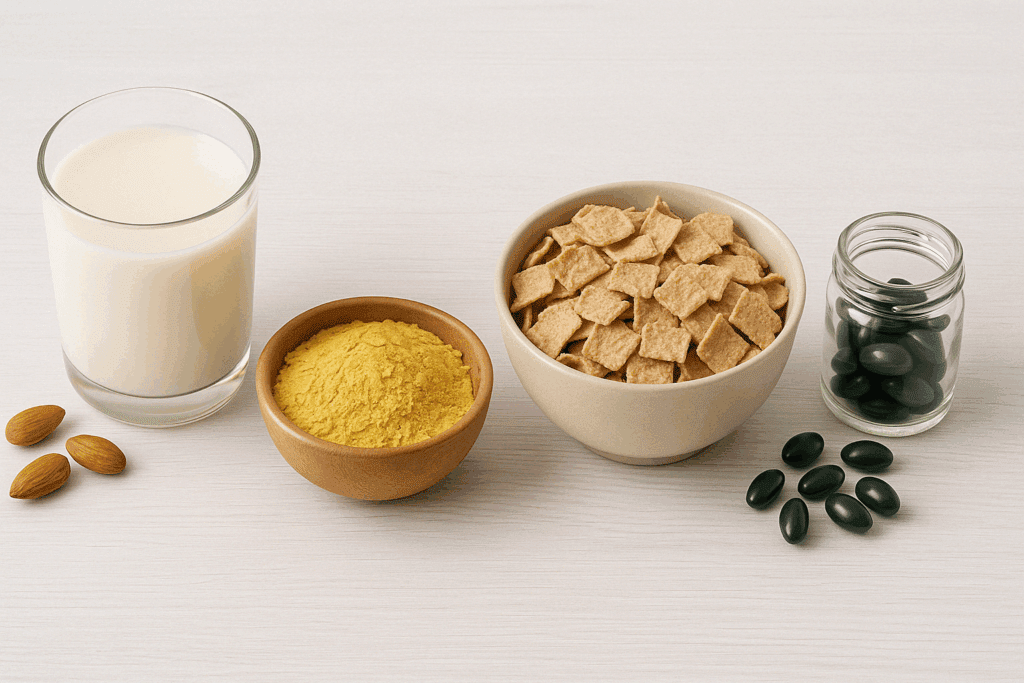
Conclusion: Embracing the Abundance of a Plant-Based Lifestyle
Exploring the things vegans can eat is not an exercise in limitation but an invitation to abundance. A balanced plant-based diet draws from an impressive palette of ingredients that support health, sustainability, and ethical integrity. From protein-packed legumes and wholesome grains to vibrant fruits, vegetables, and nourishing fats, the spectrum of vegan food examples is as diverse as it is satisfying.
While certain nutrients require mindful attention, modern food science and culinary innovation have made it easier than ever to meet all nutritional needs on a vegan diet. Fortified foods and targeted supplements serve as practical tools that complement whole foods, allowing individuals to thrive while remaining true to their values.
Ultimately, the path to a healthy vegan lifestyle is paved with knowledge, intention, and a willingness to explore. By embracing the full range of things vegans can eat, individuals can craft a diet that is not only nutritionally complete but also deeply rewarding. This journey is not about restriction—it is about rediscovery, empowerment, and aligning one’s health with the health of the planet.

